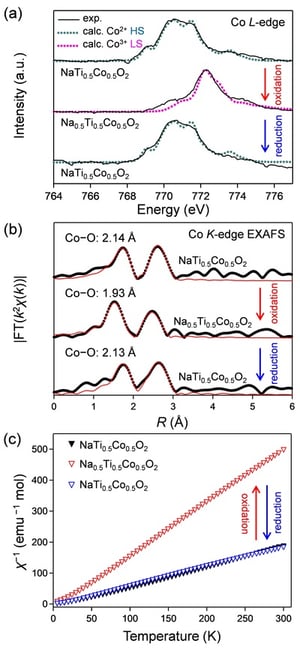PRESS RELEASE
- Research
- 2019
Redox-Driven Spin Transition in a Layered Battery Cathode Material
Authors
Eriko Watanabe, Wenwen Zhao, Akira Sugahara, Benoit Mortemard de Boisse, Laura Lander, Daisuke Asakura, Yohei Okamoto, Takashi Mizokawa, Masashi Okubo and Atsuo Yamada*
Abstract
A spin transition between high-spin (HS) and low-spin (LS) states in a solid can occur when the energies of two spin configurations intersect, which is usually caused by external perturbations such as temperature, pressure, and magnetic fields, with substantial influence to its physical and chemical properties. Here, we discover the electrochemical “redox reaction” as a new driving force to induce reversible HS–LS spin transition. Although reversible solid-state redox reaction has been thoroughly investigated as the fundamental process in battery electrode materials, coupling between redox reactions and spin transitions has not been explored. Using density functional theory calculations, we predicted the existence of redox-driven spin transition occurring exclusively for the Co3+/Co2+ redox couple in layered transition-metal oxides, leading to a colossal potential hysteresis (>1 V) between the cathodic (LS Co3+ to LS Co2+) and anodic (HS Co2+ to HS Co3+) reactions. The predicted potential hysteresis associated with the spin transition of Co was experimentally verified for NaxTi0.5Co0.5O2 by monitoring the electrochemical potential, local coordination structure, electronic structure, and magnetic moment.

ACS Publications:https://pubs.acs.org/doi/10.1021/acs.chemmater.8b04775

